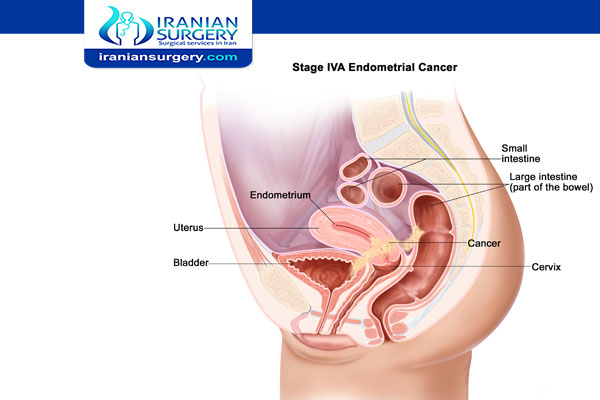Types of Cervical Cerclage
Cervical Cerclage Types
Prior to getting the cerclage, your medical history will be reviewed, including an examination of your cervix and transvaginal ultrasound. Your doctor will determine the procedure best suited for your case, and will pick one of three options
The three types of cervical cerclage are :
. Transvaginal Cerclage (TVC) – TVC may be placed anytime within the 12th week onwards. The TVC is removed around the 37th week so that there are chances of normal delivery after cervical cerclage.
. Transabdominal Cerclage (TAC) – TAC is a permanent procedure hence the delivery has to happen through C-section.
. Transvaginal Cervico-isthmic Cerclage (TVCIC) – TVCIC can be removed for vaginal delivery or can be left if it is a C-section.
 Read more about : C-Section (Cesarean Section) Recovery
Read more about : C-Section (Cesarean Section) Recovery
Read more about : Clitoromegaly surgery pictures
Read more about : Kidney transplant in Iran success story in Iran
Read more about : Cancer treatment success story in Iran
Read more about : Sex reassignment surgery success story
Read more about : IVF
About Iranian Surgery
Iranian surgery is an online medical tourism platform where you can find the best Surgeons in Iran. The price of a cervical cerclage procedure in Iran can vary according to each individual’s case and will be determined based on an in-person assessment with the doctor. So if you are looking for the cost of cervical cerclage procedure in Iran, you can contact us and get free consultation from Iranian surgery.

Cervical Stitch Placement Procedure
In a cervical cerclage surgery stitches are placed in the cervix which is the outlet of the uterus to hold it closed. This is carried out using anaesthesia (general or regional). An instrument is used to spread the vaginal walls and the cervix is sewn in place. If you’re wondering about how long a cervical cerclage procedure takes, then the answer is about 30 minutes.
There are 3 ways in which the cervical stitches during pregnancy are done.
- In this procedure, a stitch is placed through the vagina in and around the cervix like a purse string and placed at the bottom of the cervix as high as the doctor can reach. This is called Transvaginal Cerclage (TVC).
- A band is placed around the outside of the cervix and then tied to control dilation. The band is placed either at the top or at the bottom of the uterus. It is placed laparoscopically or through an incision via the abdomen. In this procedure, the size of the cervix is not made smaller, the band stops it from dilating. This is called as the Transabdominal Cerclage (TAC).
- A small incision is made in the cervix and a special tape is tied through it to close the cervix. This cerclage is placed above the cardinal ligaments, but not as high as the TAC. This is the third type of cerclage, Transvaginal cervico-isthmic cerclage (TVCIC).
The cervical stitch may cause some pain, spotting or painful urination. Your doctor may prescribe you Acetaminophen to help you get relief from the cervical stitch pain. If the doctor has placed stitches to reposition the vaginal tissues due to the incision in the cervix you may notice the passage of the material in 2 to 3 weeks as the stitches take time to dissolve.
Read more about : amoxicillin for bartholin cyst
Read more about : Cervical cancer treatment
Cervical Stitch Removal
The removal of cervical cerclage happens in or around the 37th week or at the onset of preterm labour. In case of any emergency, it may be removed earlier.
Removing the Transabdominal Cerclage (TAC) is a painless procedure which can be performed without any anaesthesia. It may cause light bleeding sometimes.
For Transabdominal Cerclage (TAC) removal a surgery has to be performed. The cerclage maybe left in place in case you plan to have a C-section.
You may go into labour (normal delivery) within 24 hours after the cervical stitch is removed. If you have had a Transabdominal Cerclage then you will need to go for a C-section.
How long is the Cerclage Left in?
The cervical cerclage procedure is performed between 12th and 14th weeks of pregnancy (at the beginning of the 2nd trimester) before symptoms of premature labor begin. Emergency cerclages are those placed at a later stage in pregnancy when cervical changes have already begun.
The cerclage can be left till the 37th week of pregnancy. Post which they can be removed. If you plan to go in for C-section then the cerclage can be left inside. It can be removed before your water breaks or contractions start.
Read more about : Risk factors of cervical cancer
Read more about : Early symptoms of Cervical cancer
What are the Results?
In a woman who has had a previous preterm delivery and who is pregnant and has a short cervix (less than 25 mm), result of cervical cerclage will be preventing a preterm delivery and reducing the chances of death and illness in the baby.
Success Rate of Cerclage Stitch
Performing a cerclage stitch of a combination of procedures cannot assure a successful full-term pregnancy. The doctors at the most reduce the risk for you and your baby. Cerclages work best when they are placed early in pregnancy. The success rate for cervical cerclages is between 85%-90%. The success rate is calculated by assessing the number of pregnancies delivered closer to the term with the procedure. Emergency cerclage has the lowest success rate.


